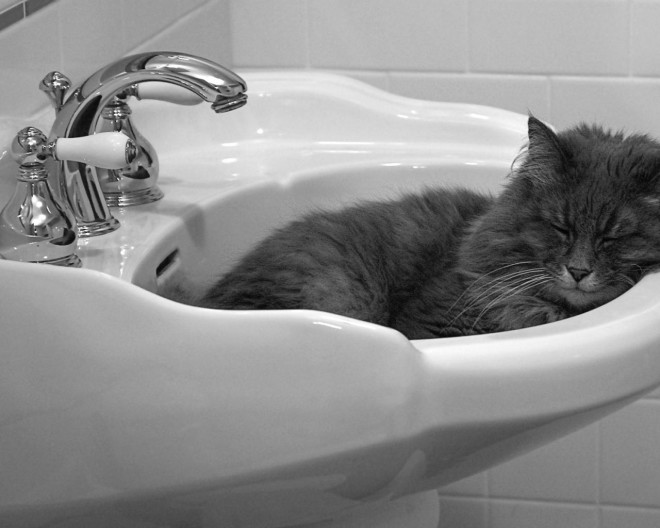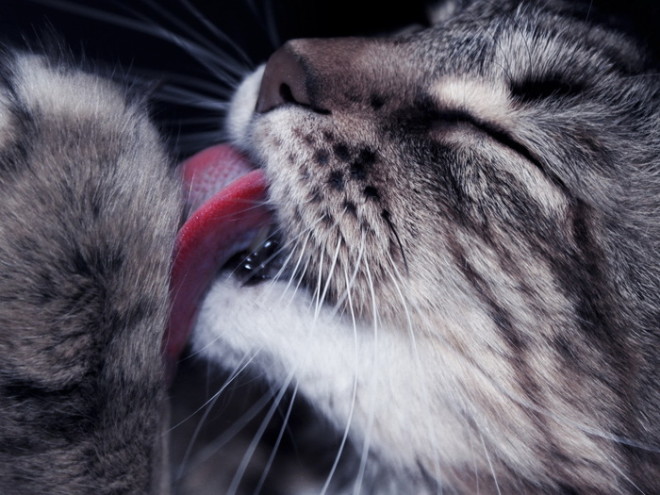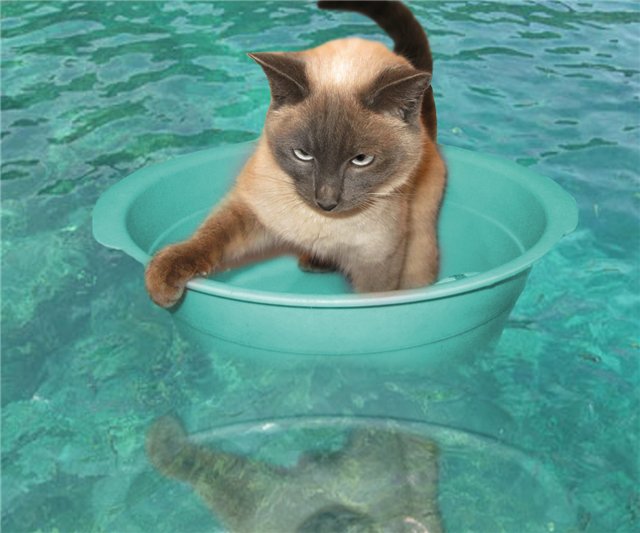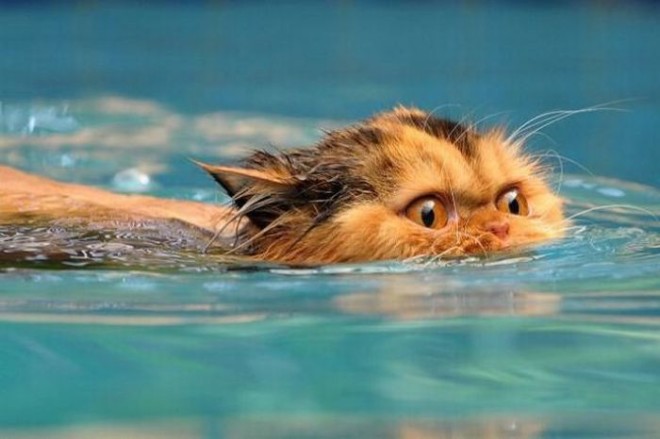Everything about bathing cats

Bathing a cat - it is very responsible. Remember that bathing these pets is possible only in special cases. For example, to get rid of parasites. Or if the animal is heavily contaminated. Swimming is allowed once every six months to restore the good looks of wool. Before the procedure, be sure to read about how to bathe a cat, not to inflict harm.
Cats yourself an excellent job with personal hygiene. These purified chistyuli its wool after each meal or going to the toilet. To do this, nature has provided a special hard villi on cat language.

Why cats are afraid of water
Wool cats covered with special grease. It makes villi so soft and shiny. When you bathe your cat, this grease is washed off and the hair loses its beautiful appearance, as well as its main feature - the insulation. That's why many cats fear of water laid on an instinctive level. Therefore, you should not abuse the frequency of water treatments.
bathing a cat
If, however, there was such a need, then how to bathe a kitten, so as not to harm him?
For a start, do not feed the cat before bathing. To wash the pet can only use special "cat" shampoos. In a pinch, you can use tar or baby soap.
It's best to use a special dry shampoo for cats. In this case, the procedure will be more complicated than the usual combing. Use a shampoo can be no more than once every six months. Note that this should be done in a place without carpeting, as the powder easily scatters around. Powder Shampoo lightly rubbed into the cat's fur, then she carefully combed.
Most cats are afraid of water. Therefore, the standard washing can cause a lot of problems. Therefore it is better to water procedures to cut the claws or use special caps. Otherwise, you risk being badly scratched. Before bathing your cat should be well combed and rid of tangles. During the procedure you need to carefully take care of the cat's ears against ingress of water and shampoo. You can even put on the cat's head cap from a plastic bag. Note that the cat shampoo foams badly, so they should be applied very carefully.

If you bathe a kitten, it is possible to do a sink or basin. If you have a large adult cat, then use the tub better. Water should only reach tum cats. During swimming it is best to turn off, as the sound of flowing water can scare the poor animal. Water should be at room temperature. Better even a little cooler than a little hot. Be sure to check it before lowering the cat in water. It is best to bathe your home darling with the assistant. That one man held her, and the other could easily be washed. If your animal reacts very aggressively to water treatment, it is possible to use a special cat a sedative, but it is worth doing only as a last resort.
It is not necessary to wash the cat too long and very zealous in rubbing and foaming shampoo. Make sure the shampoo does not hit the ears and eyes of the animal.
If the shampoo still hit the glazik, gently wipe it with a weak solution of tea and drip special eye drops to relieve irritation. The softer and faster you spend swimming, the easier it will take a cat. Shampoo need to rinse very thoroughly. Remember that the cat immediately after washing will begin to lick himself tongue. shampoo excess can poison a cat. Muzzle cats do not have to wash! Firstly, it is dangerous. Second, this great animal to cope on their own. But if the contamination is too great, better gently rub its face soaked in water with a towel or soft cloth.

After bathing, the cat must be carefully wipe with a towel. Remember that the animal will be strongly freezing after water treatment. Try to warm the cat and do not subject it to strong drafts. It is desirable to hold the cat in a towel for 5 - 10 minutes. towels should be replaced by dry if necessary. When the cat is still breaks out from you and start grooming yourself, try to lay it under another dry towel so that it absorbed the remnants of moisture. If the cat can not get warm, be sure to wrap it in something. These animals are very easy to pick up pneumonia after bath procedures.
